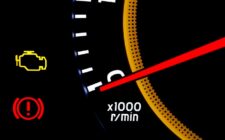Ignition coils are an important component in any internal combustion engine. They are responsible for converting the low voltage current from the car’s battery into the high voltage current needed to spark the spark plugs and ignite the fuel-air mixture in the engine’s cylinders.
How Do Ignition Coils Work?
An ignition coil is typically made up of two coils of wire, called the primary and secondary coils. The primary coil is connected to the car’s battery and receives a low voltage current. This current flows through the primary coil and creates a magnetic field. The secondary coil is wrapped around the primary coil and is made up of many more turns of wire. When the current flowing through the primary coil is interrupted, the magnetic field collapses and induces a high voltage current in the secondary coil. This high voltage current is then sent to the spark plugs to ignite the fuel-air mixture in the engine’s cylinders.
Types of Ignition Coils
There are different types of ignition coils, such as the traditional “canister” style coil and the newer “coil-on-plug” style. The canister style is a single coil that is connected to a distributor, which distributes the high voltage current to the spark plugs.
The coil-on-plug style is a separate coil for each spark plug, mounted directly on top of the spark plug. This allows for more precise ignition control and can improve engine performance.
If you want to buy aftermarket ignition coils, you can head to SuncentAuto, a processional car parts store with free shipping.
What Are the Signs to Replace Ignition Coils?
Ignition coils can wear out over time and may need to be replaced. Signs that an ignition coil may be failing include a rough idle, misfires, and a decrease in engine performance. It’s important to have a failing ignition coil replaced as soon as possible, as a bad coil can lead to engine damage and reduce fuel efficiency.
How to Test Ignition Coils?
Testing ignition coils can help identify problems with the coils or with other parts of the ignition system. Here are a few steps for testing ignition coils:
- Locate the ignition coils: In most vehicles, the ignition coils are located on or near the engine, often near the spark plugs. Some vehicles may have a single ignition coil that provides voltage to multiple spark plugs, while others may have a separate coil for each spark plug.
- Check for visible signs of damage: Before testing the ignition coils, look for any visible signs of damage, such as cracks or corrosion. If a coil appears damaged, it should be replaced.
- Check for continuity: Using a multimeter set to the “continuity” setting, check for continuity between the primary and secondary terminals of the ignition coil. Continuity should be present, indicating that the coil is functioning properly.
- Check for resistance: Using a multimeter set to the “resistance” setting, check the resistance of the primary and secondary windings of the ignition coil. The resistance should be within the manufacturer’s specified range.
- Check for voltage: Using a multimeter set to the “voltage” setting, check the voltage at the primary and secondary terminals of the ignition coil while the engine is running. The voltage should be within the manufacturer’s specified range.
- Check the spark plugs: If the ignition coils pass all the above tests, it is important to check the spark plugs. Spark plugs that are worn, fouled or damaged can cause a misfire or no start condition, even if the ignition coils are good.
By following these steps, you can test ignition coils and identify any problems that may be affecting the performance of your vehicle. Keep in mind that for most of these steps, it’s best to consult the vehicle’s service manual for the specific instructions and resistance/voltage values for that vehicle.
Last Words
Ignition coils play a crucial role in the internal combustion engine, converting low voltage current from the car’s battery into the high voltage current needed to ignite the fuel-air mixture in the engine’s cylinders. Different types of ignition coils are available, and it’s important to have a failing ignition coil replaced as soon as possible to avoid engine damage and reduce fuel efficiency.




